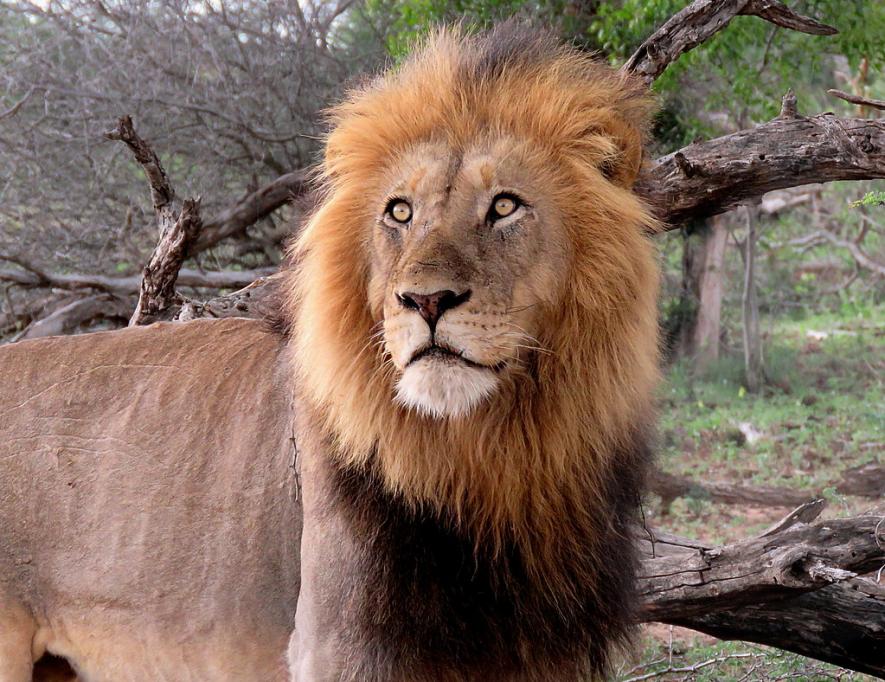Attacks on Humans by Large Carnivores More in Low-Income Countries

Image Courtesy: Flickr
New Delhi: Man-animal conflicts are rising globally—this is a widely recognised phenomenon and most of us would readily accept it. But if it is asked whether there exists any relation between the socioeconomic condition with the man-animal conflict, then? Probably it won’t be that easy to answer. Deforestation, increasing human activities in the wild and encroachment to the habitats of the animals are some of the widely accepted reasons for the man-animal conflict, but it does not end there. In fact, there exists a relationship between the socio-economic conditions with the conflicts of humans with wild animals.
A recently published study in the journal Plos Biology tries to find out how socio-economic factors are linked to the increase in man-animal conflicts. The study, concentrating on large carnivore attacks on humans collected data during the period 1950-2019. Here, the researchers calculated the attacks on humans by large carnivores (like Tigers, Wolves, Bears, Leopards, Tigers etc.) and found that these attacks are increasing over time. Moreover, they revealed another critical aspect: such attacks are increasing in low-income countries.
The researchers considered over 5,000 incidents of large carnivore attacks on humans during the study period and found that most of the attacks ended in human injuries (68%) with 32% resulting in fatalities. They considered 12 species of large carnivores belonging to the families Felidae (which is the cat family in common), Canidae (which constitutes dog-like animals) and Ursidae (Which constitutes the bears) for the study.
The researchers started with the hypothesis that in high-income countries, the attacks on humans are mostly due to human activities of high risk like recreational activities, where humans enter the habitats of large carnivores deliberately. On the other hand, in low-income countries, people are exposed to the dangers of attacks during livelihood activities on a regular basis. In such countries, human habitats exist in proximity to large carnivore habitats.
Firstly, they analysed how the reported cases of attacks had varied over the years at a global scale. They also looked for similarities, if any, in the long-term patterns of the attacks in different regions along with finding the circumstances of such attacks. The study authors also focused on predatory attacks, that is attacks by large carnivores on humans with the purpose of consuming the victims. For this, they considered the cases where the victim was dragged to isolated places from the location of attack but is alive; the victim was consumed partially after death; the body of the victim was covered by leaves and soil. While most of the attacks are defensive and can be mitigated by understanding animal behaviour, predatory attacks are more dangerous and difficult to deter.
The study revealed that the number of attack reports has increased over the years across the globe, especially in low-income countries having low carbon emission records. During the early 1990s, the study found, the numbers of attacks were nearly similar among the countries having different forest coverage, however, the number of attacks has shown a decreasing trend in those countries having a high proportion of forest.
Attacks amongst high-income countries commonly occurred during recreational activities like hiking, camping etc. On the other hand, nearly 90% of the attacks in low-income countries occurred during day-to-day activities related to livelihoods like fishing, farming and grazing. The study also revealed that the kinds of attacks are different depending on the species. The felids and canids unleashed more predatory attacks, while the Bears attacked mostly for defensive purposes like defending their cubs. Most of the fatal attacks during the study period were found to have occurred in low-income countries, especially where Lions and Tigers are present.
Commenting on the findings of the study, corresponding author Vincenzo Penteriani of the department of evolutionary ecology, national museum of natural sciences, Spanish national research council, said in a statement, “When human recreational and/or livelihood activities overlap with large carnivore ranges, it is crucial to understand how to live with species that can pose threats to humans. Factors triggering large carnivore attacks on humans depend on the combination of local socio-economic and ecological factors, which implies that measures to reduce large carnivore attacks must consider the diverse local ecological and social contexts.”
The research team also included researchers from the Wildlife Institute of India, Dehradun and Barasat Government College, Kolkata. The study suggests that India witnesses very frequent predatory attacks by Tigers, Leopards and Wolves. Tiger attacks in the Sunderbans and Leopard attacks in the Kashmir region are found to be mainly predatory. Attacks elsewhere in India were found to be mostly defensive in nature. In fact, the study found that India has the highest proportion (about 72%) of predatory attacks by Tigers, Lions, Wolves and Leopards. In India over 70% of the victims were adults, the study suggests.
Get the latest reports & analysis with people's perspective on Protests, movements & deep analytical videos, discussions of the current affairs in your Telegram app. Subscribe to NewsClick's Telegram channel & get Real-Time updates on stories, as they get published on our website.














